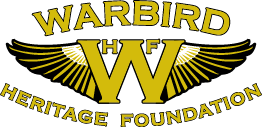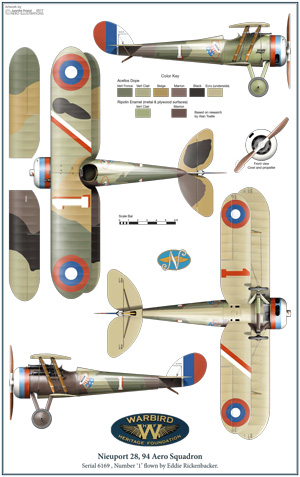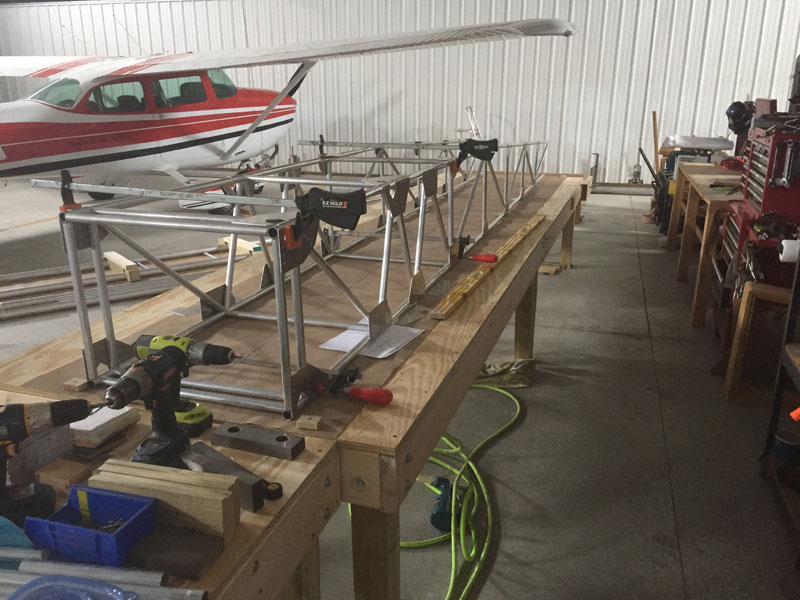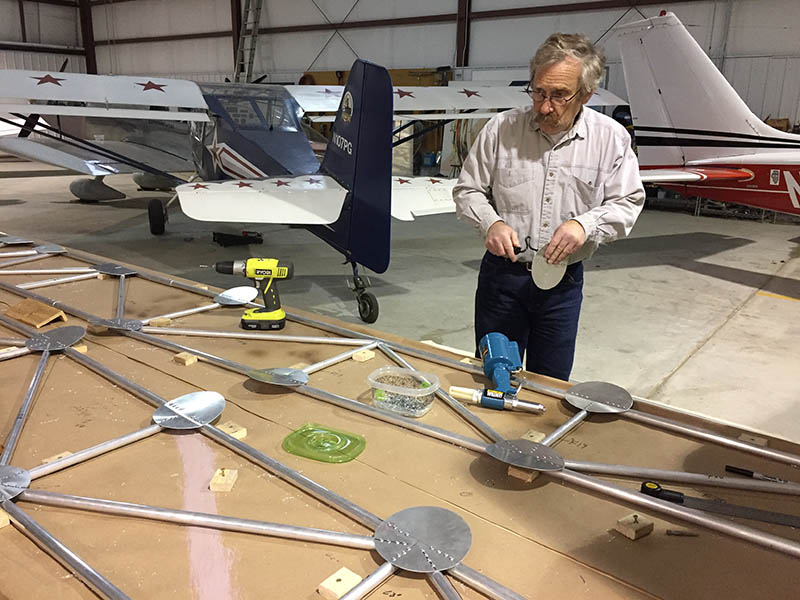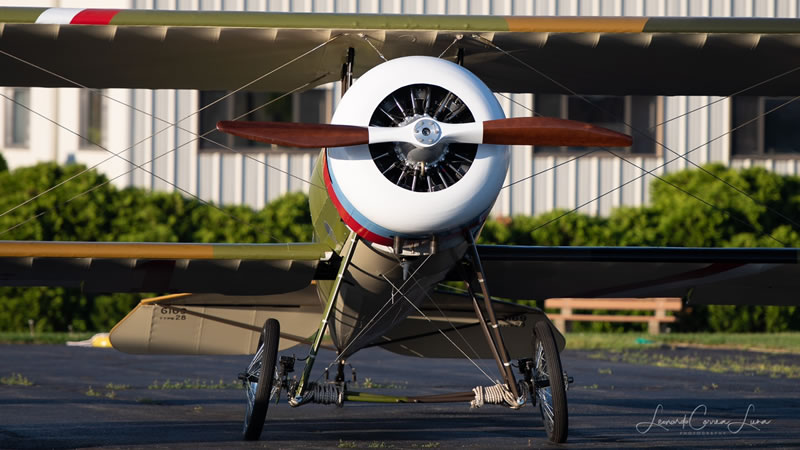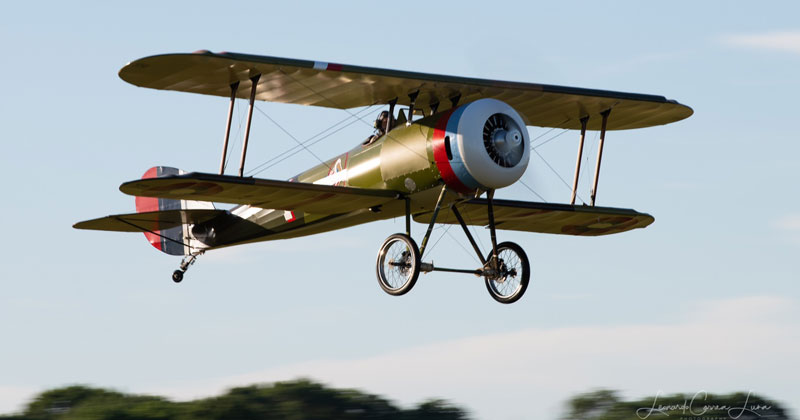
Nieuport 28
Military History
World War I was the first major conflict involving the large use of aircraft. Airplanes were just coming into military use at the outset of the war. Initially, they were used mostly for reconnaissance. Pilots and engineers learned from experience, leading to the development of many specialized types, including fighters, bombers, and ground-attack airplanes.
Great Britain had formed the world's first air force to be independent of either army or naval control, the Royal Air Force. The American army and navy air services were far behind; even in 1917, when the United States entered the war, they were to be almost totally dependent on the French and British aircraft industries for combat aircraft.
By early in 1918, the SPAD S.XIII was established as the standard French fighter aircraft. The United States Army Air Service was desperately short of fighters to equip it's planned Pursuit (Fighter) Squadrons. The aircraft that they wanted to acquire was the SPAD S.XIII. The SPAD was initially unavailable due to an engine shortage. The Nieuport 28 was offered to the American Expeditionary Forces as an interim alternative.
The Nieuport 28 became the first ever fighter aircraft to enter service in a U.S. Fighter Squadron.
The first Nieuport 28s were delivered to the U.S. Army Air Service in mid February of 1918 without armaments. At the time, there were no Vickers machine guns available to supply the squadrons, so the aircraft were initially flown on unarmed training flights so pilots could familiarize themselves with the handling and performance of these aircraft. The squadrons began receiving deliveries of the guns in mid-March, and began outfitting their aircraft immediately.
On April 14, 1918, the second armed patrol of the 94th Aero Squadron resulted in two victories when Lieutenants Alan Winslow and Douglas Campbell (the first American trained ace) each downed an enemy aircraft over their own airfield at Gengoult. Thus, the 94th Aero Squadron was credited with the first official downing of an enemy aircraft!
Several well-known World War I American fighter pilots, including the 26 victory ace, Captain Eddie Rickenbacker, began their operational careers on the Nieuport 28. Quentin Roosevelt (The son of U.S. President Theodore Roosevelt) was shot down and killed flying one of these aircraft.
A total of 297 Nieuport 28's were purchased by the United States Army Air Service. Four American Expeditionary Forces Pursuit Squadrons, the 27th, 94th, 95th, and 147th Aero Squadrons, flew Nieuport 28's operationally for various periods between March and August of 1918.
Read more information on the Nieuport 28 from the free online resource 'Wikipedia'.
Aircraft Construction
In order to expand the scope of our aircraft collection to cover the period from the beginning of the 20th century to the current era, the Warbird Heitage Foundation has teamed up with EAA Chapter 414 to build and fly a full size replica of a Nieuport 28 fighter plane from the First World War!
We have chosen to build a reproduction using modern materials and engines, instead of a restoration project, because the original wooden airframe and engines are considered unsafe to fly by today's standards.
As many of you know, the Nieuport 28 was assigned to the 94th Aero Squadron. This squadron was part of the 1st Pursuit Group of the U.S. First Army. It's mission was engage and clear enemy aircraft from the skies.
The 94th Aero Squadron was credited with the first offical downing of an enemy aircraft. Among it's notable members were Eddie Rickenbacker and Douglas Campbell, the first American trained Air Aces.
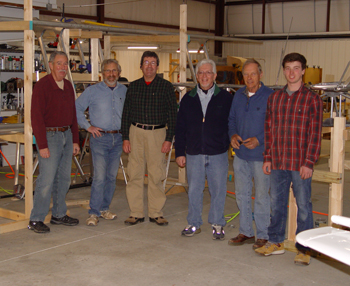
The key six volunteers working on the Nieuport 28 construction.
From left to right: Jim Hull, Mike Racette, Joe Shea,
John Cecilia, Jim Goodman, and Charles Kendall.
To quote Paul Wood "Our intent is to make this project as exacting and authentic as humanly possible." We will be drawing on the expertise of the Airdrome Aeroplanes Company of Holden, MO, and a total of 10 volunteers from EAA Chapter 414 to complete the project. Under the close guidance of James Goodman (Quality Assurance), James Hull (Project Manager), and some additional insight from Ted Hamady, a retired historian, formerly with the Smithsonian Institution in Washington, D.C. We hope to have the aircraft flying, shortly after the 100th anniversary of the first downing of an enemy aircraft by a U.S. fighter plane, in early 2019.
Follow along with the construction effort as it progresses by viewing the photographs on the right.
We are happy to share photos of our first flight post-restoration of our Nieuport-28. Please enjoy the photos!
SPECIFICATIONS
| Manufacturer: | Societe Anonyme des Etablissements Nieuport (Original Aircraft) |
| Kit acquired from Airdrome Aeroplanes Company of Holden, MO, built by | |
| Warbird Heritage Foundation / EAA Chapter 414 (Reproduction) | |
| Model: | Nieuport 28 C.1 |
| Year Built: | 1918 (Original Aircraft) |
| Under Construction (Reproduction) | |
| N-Number: | Pending |
| Engines: | One |
| Gnome 9-N rotary, 102KW - 160 HP (Original Aircraft) | |
| Rotec Radial R3600, 9 Cyl - 150 HP (Reproduction) | |
| Length: | 21 ft. 4 in. |
| Height: | 8 ft. 0 in. |
| Wingspan: | 26 ft. 9 in. |
| Weight: | Empty: 1,227 lbs. |
| Loaded Weight: 1,625 lbs. | |
| Performance: | Range: 180 miles |
| Service Ceiling: 17,390 ft. | |
| Max Speed: 123 MPH at 2,000 m. | |
| Armament: | 2 X .303 in Vickers machine guns |
GALLERY
Explore the photos of our aircraft on this page by clicking the play arrow, or click on the square in the upper right hand corner to go to full screen. Once on the page, click play. To return to this page, click upper right hand button again. In full screen mode, you can double click the image to get a close-up view.
Construction Photos - Part 1
Construction Photos - Part 2
All photos in this gallery courtesy of John Cecilia
First Flight Photos
All photos in this gallery courtesy of Leonardo Correa Luna Photography
AVAILABILITY
Our Nieuport 28 is available for airshows and special events. For additional information, please contact us!
